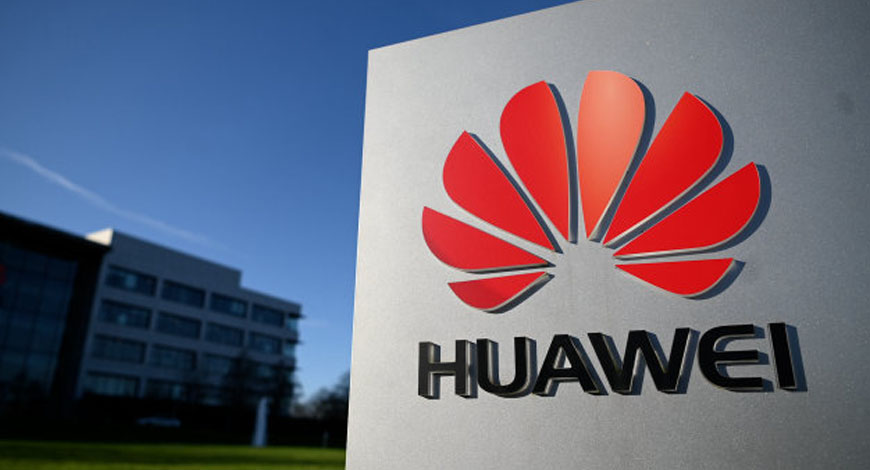Company News
Huawei’s rebirth as cloud provider faces total U.S. export ban threat

Huawei Technologies’ pivot away from smartphones toward cloud technology and other business solutions faces a new threat: U.S. sanctions that now cover just high-performance semiconductors could be extended to all products.
At this year’s Mobile World Congress in Barcelona, which wrapped up Thursday, Huawei easily occupied the largest space among exhibitors, filling 9,000 sq. meters right near the entrance.
Presenters guided attendees through the Chinese company’s forays into digitizing ports and other infrastructure, as well as the company’s work in health tech. One British employee of a software development company said the advanced technology on display was unlike anything he has ever seen.
But there was one thing missing from Huawei’s demos at the four-day event: new smartphones. The expo had been a stage for the company’s splashy mobile phone launches in previous years.
This year, consumer devices were barely a part of displays, an absence explained by U.S. trade restrictions imposed on Huawei.
The U.S. Commerce Department first slapped Huawei with export controls against the company’s suppliers in 2019, with officials citing national security risks over the possibility that the Chinese government could access sensitive data.
Although Huawei has rejected the rationale for the controls, Washington toughened restrictions in September 2020 by banning the export of semiconductors produced with U.S. technology.
That move cut Huawei’s access to high-performance semiconductors needed for 5G-compatible smartphones, a devastating blow to all of its mobile operations.
Huawei launched its first 5G smartphones in August 2019, which drew over 1 million preorders. Now, “there are no 5G smartphones in stock” from the company, according to a source at a Guangzhou retailer. Only Huawei’s 4G phones were on display at the store.
In November 2020, Huawei sold off its low-end phone brand Honor in a move geared toward maneuvering around U.S. sanctions. Annual revenue peaked in 2020, then went on a downward slide. In 2021, the consumer products segment, which includes smartphones, turned in half the revenue of the previous year. The segment accounted for more than half total sales.
Accordingly, Huawei focused resources on business-products. Huawei recruited experts from an assortment of sectors, such as energy and finance, to develop digitization solutions for corporate clients.
Huawei organized these business-to-business units into internal “corps,” and the company broadened its cloud service offerings. Huawei is also expanding operations providing components and systems to automobile manufacturers.
Thanks to this organizational revamp, Huawei appears to have halted the drop in revenue. Sales appear to have stood at 636.9 billion yuan ($92.1 billion) last year, which was largely unchanged from 2021.
“2023 will be the first year that we return to business as usual with [U.S.] restrictions still in place,” rotating Chairman Eric Xu said in December. “It will be a crucial year for us.”
However, the U.S. is preparing to fire off another round of sanctions just as Huawei is regaining its footing.
Alan Estevez, the U.S. Commerce Department’s undersecretary for industry, said at a congressional hearing Tuesday that a rule allowing Huawei to access technology up to a certain level is “under assessment.”
This suggests the U.S. could block all exports to the company.
The Commerce Department has added Huawei to the Entity List, a roster of sanctioned businesses, allowing it to import off-the-shelf products on a case-by-case basis.
The Biden administration is considering a rule that would not only ban U.S. companies from directly doing business with Huawei, but would also prohibit exports to companies in third countries that supply Huawei, according to U.S. media reports.
This move would very likely cancel permits granted to U.S. companies Intel and Qualcomm to sell certain products to Huawei.
Lawmakers in Congress have criticized the current export control regime as having too many loopholes. The Biden administration continues to deal with the fallout from a Chinese surveillance balloon entering U.S. airspace.
There is also the issue of Russia importing basic semiconductors from China to install in weapons used to attack Ukraine.
Amid this backdrop, the Biden administration has made a hard turn toward tighter sanctions.
Many in the U.S. media have predicted that tougher sanctions would strike a deep blow against Huawei. When it comes to hardware, Huawei has a wide range of non-smartphone consumer devices, such as televisions, personal computers and smartwatches.
Fresh trade restrictions from the U.S. would expose these product lines to disruptions in output.
The impact is expected to be more limited for cloud and other services. At the same time, Huawei’s mainstay telecommunications segment, which makes base stations, accounted for over 40% of the group revenue in 2021. New sanctions could deliver a sharp hit to this.
Huawei remains the global leader in base stations, holding a 30% market share. The company has partnered with telecoms worldwide in providing 5G services.
If the U.S. imposes across-the-board sanctions on Huawei “it would make securing components difficult, and it may disrupt the maintenance of base stations,” said a source close to the company.
When Huawei founder and CEO Ren Zhengfei held a news conference at the company’s Shenzhen headquarters in May 2019, he displayed a photo of a badly damaged Soviet Ilyushin aircraft from World War II that made it back to base. He likened the fighter plane to Huawei’s struggles with the U.S.
“Even if we are beat up, we will make it out alive,” said Ren. Nikkei Asia













You must be logged in to post a comment Login